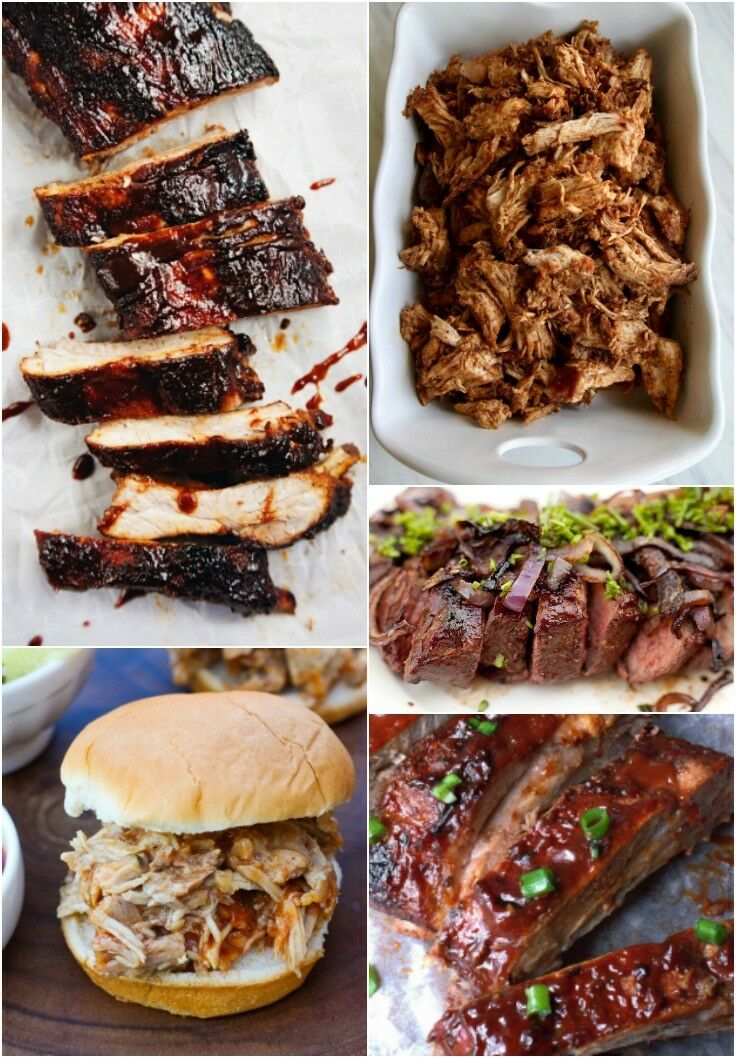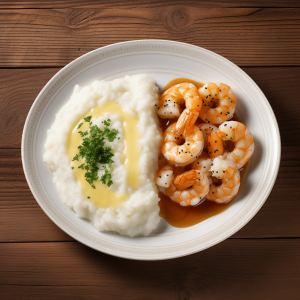
4 Generations of Southern BBQ: Recipes & Family Stories
Southern barbecue isn’t just food; it’s a legacy, a tapestry woven from generations of family secrets, smoky memories, and the unwavering pursuit of the perfect bite. This isn’t just about recipes; it’s about the stories behind them, the hands that shaped the meat, and the hearts that fueled the fires. Join us as we explore four generations of a single Southern family, their evolving barbecue traditions, and the recipes that have stood the test of time.
Generation 1: The Old Ways (Pre-1950s)
Grandma Millie, a woman as sturdy as the oak trees surrounding her rural Georgia home, embodied the essence of early Southern BBQ. Her methods were simple, relying on the slow, deliberate power of wood-fired pits and whole hogs. The meat, sourced from her own farm, was seasoned minimally – salt, pepper, and a hint of cayenne – letting the wood smoke work its magic for hours. This wasn’t about elaborate rubs or sauces; it was about the pure, primal flavor of the meat, enhanced by the smoky kiss of hickory and oak.
Recipe: Grandma Millie’s Whole Hog (Simplified)
- Ingredients: Whole hog (approx. 100 lbs), salt, pepper, cayenne pepper.
- Method: Rub hog liberally with salt, pepper, and cayenne. Cook in a wood-fired pit, maintaining a low temperature (225-250°F) for 12-16 hours, basting occasionally with pan drippings.
Generation 2: The Sauce Revolution (1950s-1980s)
Millie’s son, Billy, inherited his mother’s passion but added a twist – sauce. While respecting the traditional methods, Billy experimented, creating a vinegar-based sauce, tangy and slightly sweet, a reflection of the changing tastes of the South. He started using a combination of hickory and pecan wood for a more nuanced smoky flavor. The family gatherings around the pit became legendary, with Billy’s sauce becoming a treasured family secret, passed down through generations.
Recipe: Billy’s Tangy Vinegar Sauce
- Ingredients: Apple cider vinegar, brown sugar, ketchup, Worcestershire sauce, black pepper.
- Method: Combine all ingredients in a saucepan, simmer until thickened, adjust to taste.
Generation 3: The Innovation Era (1980s-2010s)
Billy’s daughter, Sarah, embraced innovation, while holding onto the core values of her family’s barbecue legacy. She introduced the use of gas smokers alongside traditional methods, offering greater control over temperature and cooking time. She expanded the flavor profile, experimenting with different wood types (mesquite, applewood) and adding spices like paprika, cumin, and garlic powder to her rubs. Sarah also began incorporating more vegetables into the barbecue spread – smoky grilled corn on the cob, BBQ baked beans, and coleslaw became staples at her gatherings.
Recipe: Sarah’s Smoky Paprika Rub
- Ingredients: Paprika, garlic powder, onion powder, brown sugar, cumin, black pepper, salt.
- Method: Combine all ingredients and rub generously onto the meat before cooking.
Generation 4: Modern BBQ (2010s-Present)
Sarah’s son, Mark, represents the modern Southern BBQ chef. He uses a blend of traditional techniques and cutting-edge technology, employing sous vide methods for precise temperature control and digital thermometers for accuracy. He’s also embracing the growing interest in sustainable practices, sourcing his meat from local farms and minimizing waste. Mark continues to experiment, creating unique flavour profiles, incorporating global spices and techniques, while always honouring the foundation laid by his ancestors.
Recipe: Mark’s Sous Vide Brisket
- Ingredients: Brisket, beef broth, garlic, onion, salt, pepper.
- Method: Season brisket, vacuum seal with broth and aromatics. Cook sous vide at 165°F for 12-16 hours, then finish on a smoker for smoky flavor.
| Generation | Style | Key Ingredient/Technique | Defining Characteristic |
|---|---|---|---|
| 1 | Whole Hog | Wood-fired Pit, minimal seasoning | Pure, primal flavor |
| 2 | Vinegar Sauce | Vinegar-based sauce | Tangy, sweet and smoky |
| 3 | Spice Rubs | Paprika, garlic, cumin | Flavor experimentation |
| 4 | Sous Vide | Precise temp control | Modern techniques |
The story of this family’s barbecue journey mirrors the evolution of Southern barbecue itself – a tradition that continues to adapt and evolve while always staying true to its heart: the love of good food, family, and the lingering aroma of smoke. The legacy of Southern BBQ lives on, not just in the recipes, but in the stories shared around the table, the memories made around the pit, and the bonds strengthened over generations of smoky, delicious meals.

Additional Information
Beyond the Smoke: A Deeper Dive into Four Generations of Southern BBQ
The concept of “Four Generations of Southern BBQ: Recipes & Family Stories” (assuming this is the title of the main article) offers a compelling narrative, but a deeper analytical lens reveals significant potential for expanding its value. Simply presenting recipes and anecdotes risks overlooking crucial elements that define the evolution of Southern BBQ. A more robust exploration would benefit from examining the following areas:
1. Socioeconomic and Cultural Shifts Mirrored in BBQ:
- Generational Attitudes towards Food: Each generation’s approach to BBQ likely reflects broader societal changes. For instance, the first generation may have prioritized practicality and resourcefulness, using readily available ingredients and techniques passed down through generations. Subsequent generations might show influences from broader culinary trends, adopting new cooking methods (smokers, grills), incorporating different spices, or adapting to changing dietary preferences (healthier options, vegetarian/vegan adaptations). Comparing these shifts reveals not only culinary evolution but also broader cultural changes within the South.
- The Impact of Migration and Globalization: Has the family’s BBQ tradition remained isolated, or has it incorporated elements from other cultures or regions? The influx of immigrants to the South, for example, could have influenced spice blends, techniques, or even the types of meat used. Analyzing this intersection of traditions adds significant depth.
- Economic Influences on Ingredient Selection: The availability and cost of ingredients dramatically affect BBQ styles. The first generation may have focused on inexpensive cuts of meat, reflecting a more austere economic climate. Later generations, with potentially increased disposable income, might incorporate more expensive meats or specialized ingredients. This economic perspective adds a compelling layer to the narrative.
2. The Evolution of BBQ Techniques and Equipment:
- From Pit to Grill: The shift from traditional pit-cooked BBQ to modern smokers and grills represents a significant technological advancement. Analyzing this transition reveals not only practical changes (ease of use, temperature control) but also potential impacts on the flavor profile and consistency of the BBQ. This analysis could include comparisons of different cooking methods’ impact on meat tenderness, smoke penetration, and overall taste.
- Wood Selection and its Significance: The type of wood used profoundly impacts the flavor of BBQ. Tracing the family’s wood choices across generations – hickory, oak, pecan, etc. – could highlight regional preferences, changing availability of wood types, and their impact on the final product’s taste. A detailed examination of this aspect could draw parallels with broader trends in wood selection within Southern BBQ.
- Sauce Evolution: BBQ sauces have their own distinct regional variations and evolution. Analyzing the family’s sauce recipes across generations – ingredients, consistency, sweetness, heat – provides insight into local tastes, influences from other regional styles, and the ongoing adaptation of sauce recipes to meet changing palates.
3. Preservation and Legacy: Family History and the Future of BBQ:
- Oral History and Recipe Transmission: How have the recipes and techniques been passed down through generations? Has it been primarily oral transmission, written recipes, or a combination of both? Understanding this process is vital to appreciating the challenges and successes of preserving culinary heritage.
- The Role of Family Stories: The narrative’s power lies in integrating family stories within the broader context of Southern BBQ history. Anecdotes about specific family members, challenges faced, and pivotal moments linked to the BBQ tradition add a human element and make the story resonate more deeply.
- Sustainability and Future Generations: Considering the future of the family’s BBQ tradition is crucial. Are younger generations continuing the legacy? How are they adapting the recipes and techniques to contemporary lifestyles and preferences? Addressing these questions expands the narrative beyond a mere historical account, offering insights into the long-term sustainability of a valuable cultural heritage.
By incorporating these analytical elements, “Four Generations of Southern BBQ: Recipes & Family Stories” moves beyond a mere collection of recipes and anecdotes to become a rich and nuanced exploration of cultural heritage, culinary evolution, and the enduring power of family traditions. This deeper analysis adds significant scholarly value and enhances the story’s overall impact.






